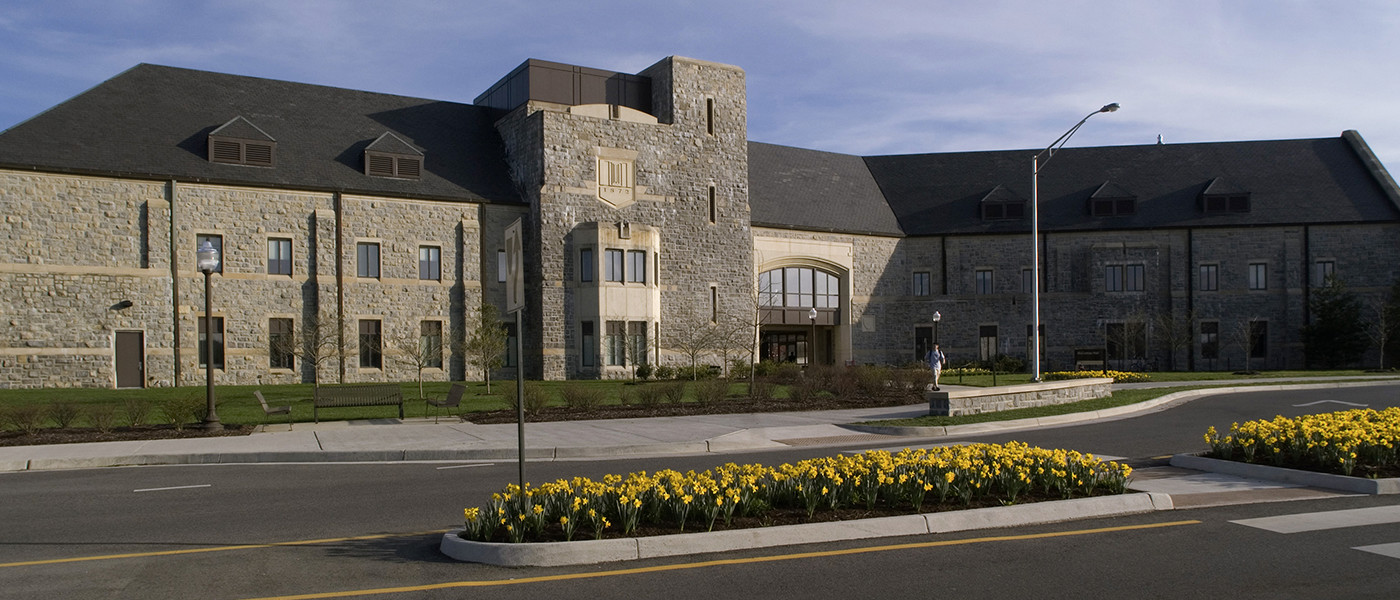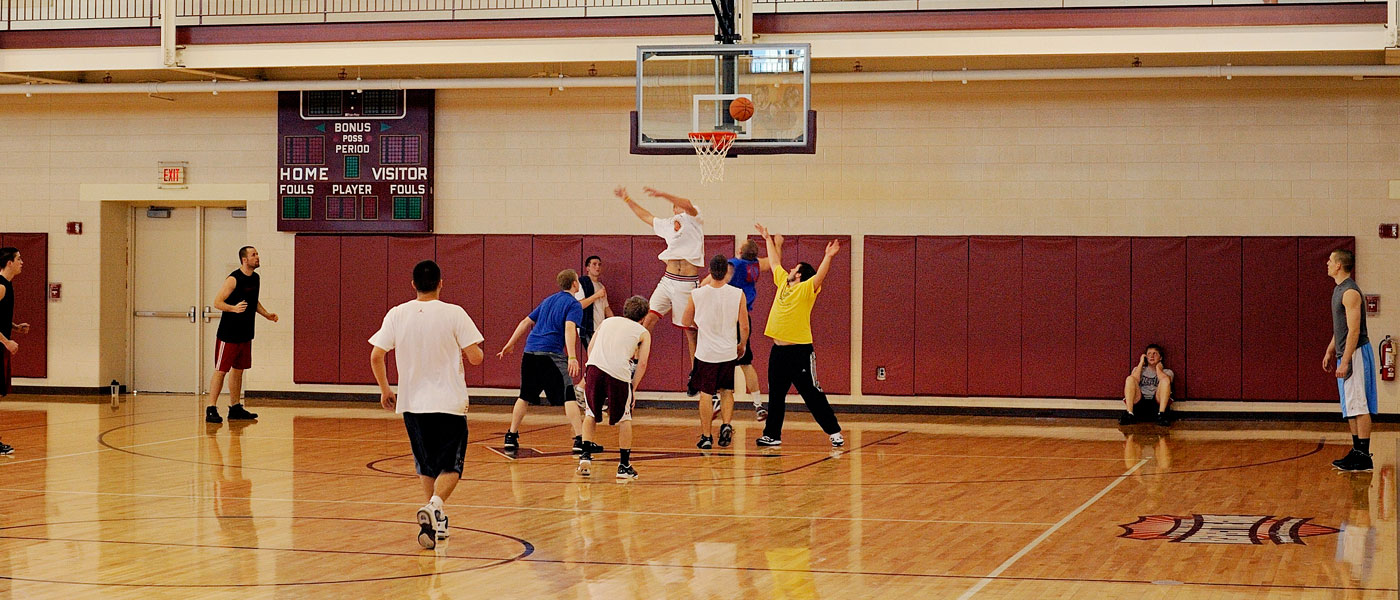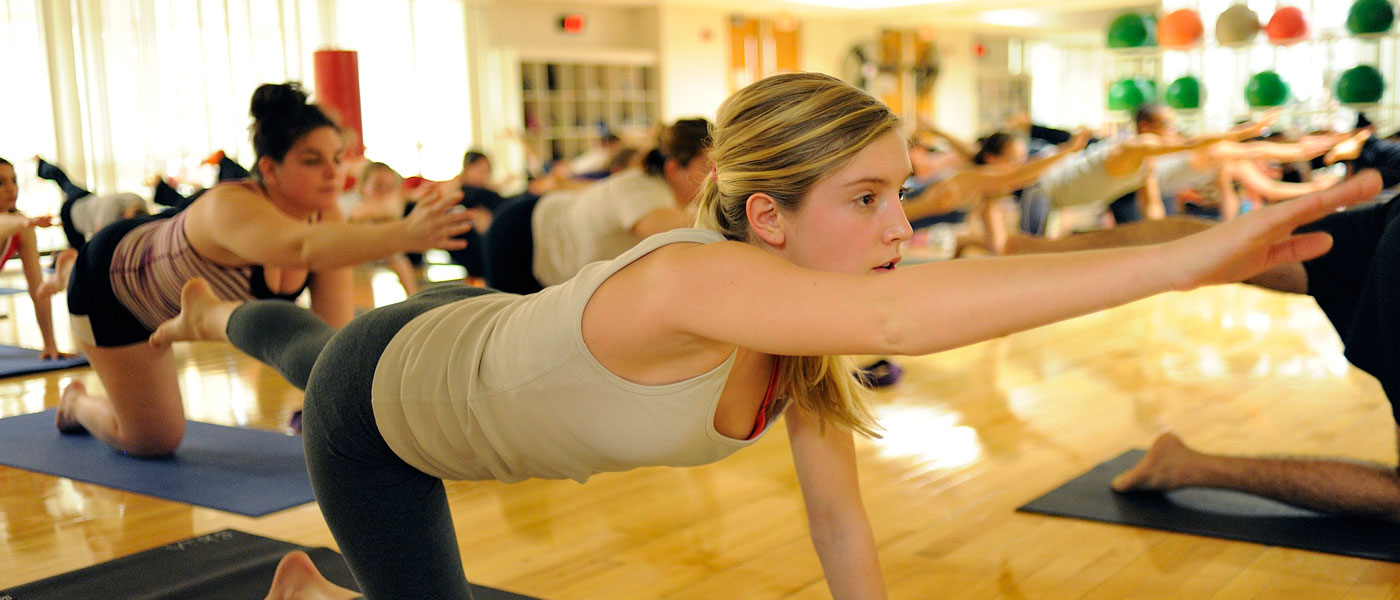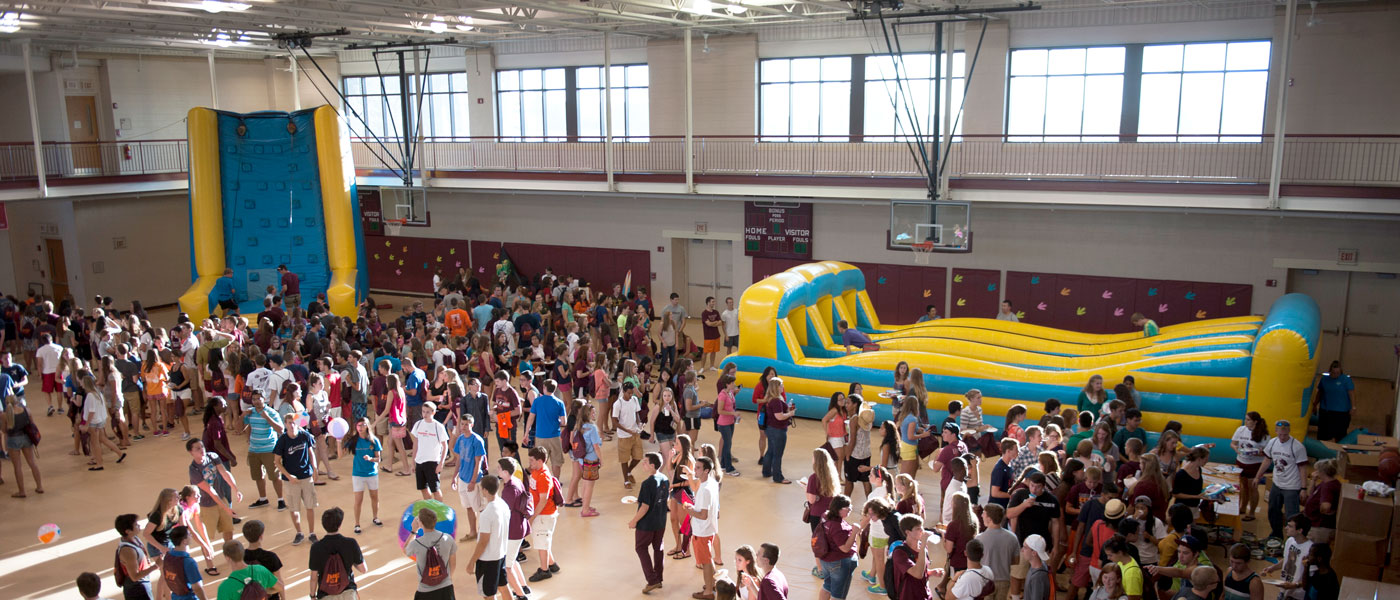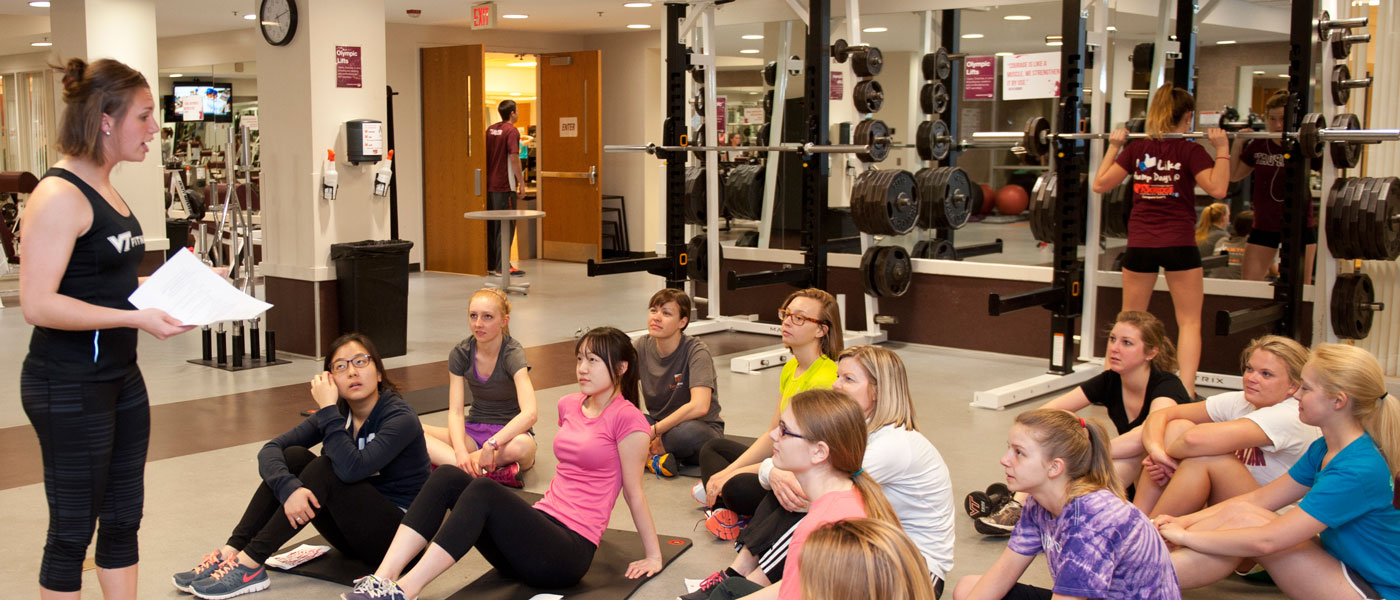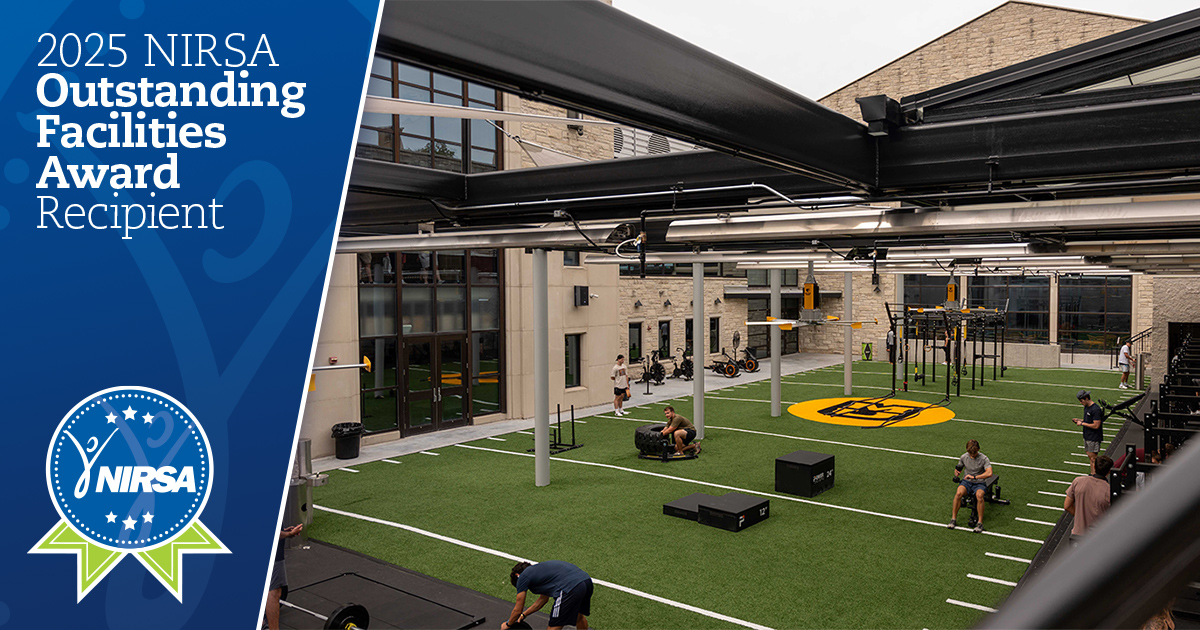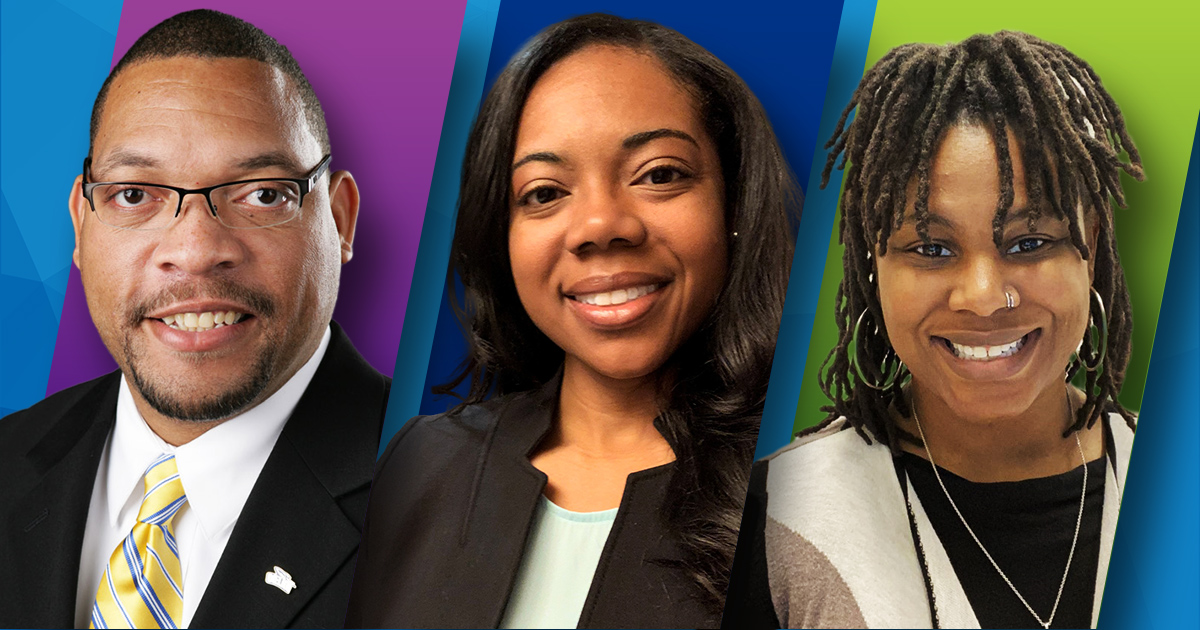Wellness centers are emerging on college campuses both as a new concept and as a re-imagining of traditional recreation offerings. They encompass preventative as well as reactive services including student health, counseling centers, and programming designed to appeal to historically-underserved populations. It’s a trend that extends beyond facility usage and marks a positive, health-conscious change in university reporting structures and goals. Campus recreation is being tasked by universities to implement this new concept of wellness on college campuses. Through recreation departments and personnel, many schools are embracing innovation regarding wellness. Virginia Tech is one of the schools at the forefront of this emerging trend in collegiate recreation.
Virginia Tech’s integrated approach to health & wellness
According to Chris Wise, Assistant Vice President of Student Affairs, the wellness goals at Virginia Tech are simple. They want “to provide an overall wellbeing approach to help students with their academic success and beyond, and to help faculty and staff thrive in their lives while working for Virginia Tech.” Like NIRSA, the university sees the value of physical activity in how it impacts healthy individuals and healthy communities. It also believes—like NIRSA—that physical activity is an important part of a holistic approach to health and wellness. Chris explains that VT believes “the integration of physical activity programs with work on mental health, physical health, etc. is important to the development of today’s college students’ lifelong goals related to wellbeing.”
As Virginia Tech’s President Tim Sands explains, “health and wellness is critical to the overall success of every student” since “students can’t fully engage in the higher education experience if they’re struggling with their health.”
At VT, the key to this “overall wellbeing approach” is the collaborative work that occurs across all five departments of the Health and Wellness unit: Recreational Sports, the Cook Counseling Center, the Schiffert Health Center, Services for Students with Disabilities (SSD), and Hokie Wellness. “The integrated approach to health and wellness acknowledges that student success and achievement are the product of an interconnected web of experiences,” explains President Sands. “I think any higher education community can benefit from a holistic approach to health, wellness, and success. It will develop a more energetic, vibrant campus, and create an appreciation for healthy living that can stay with our graduates for life.”
This holistic approach also provides for “an interdisciplinary venue for creative interaction,” says President Sands. For example, “an engineer and an artist who compete together on the field might also be inspired to work together in the lab.” In this way, he explains, integrated health and wellness aligns with Virginia Tech’s mission “to expand personal growth and opportunity, and improve the quality of life.”
The road to integrated wellness
Like many universities in the 80’s and 90’s, Chris recalls that Virginia Tech “activity areas were managed together, and our health areas were managed separately.” And, he explains, getting to where they are today at times felt like a slow process. One significant milestone for this shift to a more integrated approach to wellness came in 1998 when McComas Hall was opened to the Virginia Tech campus community.
The opening of McComas Hall ushered in a new approach for the university—it marked the initial coming together of Recreational Sports, the Cook Counseling Center, and the Schiffert Student Health Center (which housed the university’s health education programs). Chris recalls the significant transition by acknowledging that “the concept of bringing physical health treatment (the Schiffert Student Health Center) together with preventative physical health treatment (Recreational Sports) and with mental health treatment (Cook Counseling Center) was not brand new.” But, McComas Hall, he says, was “one of the early wellness concepts to dedicate a physical structure to those three departments.”
At the time of the initial planning, Virginia Tech was faced with a situation where there was real need for both a modern health care facility as well as for a new recreational facility. “The executive administration at that time,” Chris says, “including President James McComas, wanted to combine these services into an integrated building, believing it would provide an opportunity for collaboration between the three departments who would occupy the space.”
And collaborate they would. It started off somewhat slowly—the sharing of some expenditures (although Recreational Sports maintained a separate budget) and emergency procedures. But the seed of a powerful idea had clearly been planted.
While the shared physical space was starting to help the university capitalize on certain synergies, it was clear that there was still room for improvement at the organizational level. While McComas Hall had brought three previously-disparate departments together physically, the departments were still reporting to multiple Assistant Vice Presidents. But through visionary leadership—especially that of then-Vice President for Student Affairs Dr. Zenobia Hikes along with Rick Ferraro, the contemporary Assistant Vice President for Student Affairs—the three departments were aligned together with the newly-named Campus Alcohol Abuse Prevention Center (CAAPC) Department and Services for Students with Disabilities Department (SSD). These departments formed the Health and Wellness unit of the Division of Student Affairs, and by 2006 all reported to one AVP. Today, four of the five departments housed by the unit can be found in McComas Hall.
The goal, as Chris explains, was “to bring all of the Health and Wellness departments under one AVP to better provide for collaborated efforts towards student wellness.” He adds, “By bringing those most involved with mental health, physical health, disability services, and preventive health together, we have removed some barriers to our work together.”
“We are easily able to develop relationships with staff members because we all work in the same building,” says Director of Virginia Tech Recreational Sports Allison “Ali” Cross. She explains: “Conversations in the hallway are common and that is how several partnerships have been created.” And those partnerships are hugely beneficial to students. “We combine our expertise and are able to learn from one another to truly approach students from a more holistic approach,” says Ali. “Some of the partnerships have allowed us to reach smaller groups of students individually with high-impact programs and experiences. We have richer programs that benefit from the shared knowledge, resources, and access.”
For example, psychologists will work with recreational sports staff to develop exercises plans for their patients struggling with depression. “All students who are struggling with depression, anxiety, and other concerns, receive support to begin and continue a reasonable exercise program, depending on clearance from their physician,” explains Christopher Flynn, Director of the Cook Counseling Center. “Exercise is often equal to medication and therapy in alleviating symptoms of anxiety and depression—doing them all together enhances success.” Recreation staff will also refer students who are active in intramurals and rec programs, but still struggling with finding joy in day-to-day life, to the “How of Happiness” support group. The departments are interconnected for good reason.
“We all share similar goals for what we would like to see in terms of health and wellness within the Virginia Tech community,” explains Shelly Rasnick, Wellness Programs and Student Development Coordinator. “Yet we have different areas of expertise.” Working together allows departments to focus on what they know before coming together to fill in the gaps.
In this way, VT is offering students a comprehensive view of wellness and, explains Ali, are “able to reach students who can benefit from our services but may not be looking for us.” Beyond just being good for students, this approach is also pragmatic. “It’s helped to keep us from recreating programs that other areas already offer,” says Shelly.
An integrated approach to wellness really boils down to one important point, according to Ali: “Together we are stronger in our joint mission to offer preventative health care, help students thrive, build healthy Hokies, and offer effective, highly-used services.”
A whole-student approach
Ali underscores the importance of the close collaboration fostered by the burgeoning Health & Wellness unit when she says, “We’ve been able to align priorities by unifying our values around Gallup’s five elements of wellbeing and the VT Aspirations for Student Learning.” Moreover, she adds, “we have clarity about how we believe we should help to develop our students and what student success/engagement looks like.”
The Virginia Tech Division of Student Affairs has articulated five Aspirations for Student Learning. “They are divisional priorities,” Chris Wise explains, “that represent our learning goals for our students. They are grounded in areas of wellbeing that as educators we strive to teach towards: things such as finding your purpose, understanding yourself and who you are, taking care of yourself, being a good community member, and committing to service to others.” The five Aspirations are for VT students and alumni to:
- Commit to Unwavering Curiosity
- Pursue Self Understanding and Integrity
- Practice Civility
- Prepare for a life of Courageous Leadership
- Embrace UT Proism—the university motto meaning That I May Serve—as a way of life
These aspirations allow the entire division to share an integrated approach and common language to developing students outside of the classroom. These aspirations were developed in an organic way throughout the Division of Student Affairs, and the team continues to adapt them into their daily work and programs.
“Almost everything we do contributes to the aspirations for student learning,” says Ali. “Every program, event, and service is designed to help students explore the value of those aspirations.” Ali explains that whether it’s through hobbies, activities, new sports, etc., “we advance curiosity and self-understanding. We offer so many opportunities for students to be curious and try new things. As they explore, they have a better understanding of who they are, how they think, how they succeed, what appeals to them, how to best take care of themselves, etc. Through our ‘Venture Out’ trips, intramural sports program, or sport club opportunities, we cultivate civility, sportsmanship, and teamwork.”
“Our divisional mission focuses on the whole student,” explains Dr. Patty Perillo, Vice President of Student Affairs. “More often than not,” she says, “people try to separate the dimensions of ourselves; but our university’s unified focus on health and wellness honors the integral nature of who students are—whole human beings.
Having these departments working together encourages a greater focus on the whole student and inspires students to develop healthy habits of body, mind, emotion, and spirit. And, now that we have integrated preventive work for students, faculty and staff, it invites the same for all members of the Virginia Tech community.” Dr. Perillo’s sentiment will sound familiar to proponents of NIRSA’s model for valuing health & wellbeing in campus recreation.
“Having a sense of purpose and an understanding of what overall wellbeing looks like is really crucial for being a healthy and happy individual,” says Shelly. And so the goal of the wellness programs at Virginia Tech is to support students so they can learn and grow effectively. “I think a lot of students still struggle with recognizing how broad wellbeing can be,” admits Shelly. “They may have one or two areas that they are really thriving in, but if they have an area where they are struggling, they have trouble reaching their full potential—both academically and in their daily lives.” The Health and Wellness unit at Virginia Tech works closely with some of the academic programs to start conversations about wellness and available resources. It also emphasizes that wellness goes beyond the physical, and strives to support student’s social, spiritual, intellectual, and emotional wellness too.
Encouraging wellness
Virginia Tech is committed to promoting wellness within both its student population and among its employees. For example, through a partnership with the human resources department and the Hokie Wellness Team, new VT employees are given a free month of rec center membership that they can take advantage of at the time of their choosing. “In recent years,” says Chris Wise, “we have made most of our programs available to the entire campus community in all our wellness areas.” This allows VT staff and faculty to model programs for students and spread awareness of resources and opportunities.
While some programs—like Non-Smoking Hokies, which essentially create walking human billboards promoting tobacco use cessation—are led up by Hokie Wellness, quite a few of those resources and opportunities are offered through Receational Sports. “We have been pushing wellness options through our recreational sports department for the past ten years,” explains Chris. Among those programs are the T-shirt Campaign, iWorkout, wellness fairs for both students and employees, Hokie Camp during July and August to promote rec sports and physical activity, and planned wellness retreats.
To make a number of different ambitious programs realities, the recreation department works in tandem with the other departments in the Health and Wellness unit. Thanks to collaboration with the Cook Counseling Center and the Schiffert Student Health Center, many programs tackling a diverse array of wellness areas are possible. Among these are the Body Matters Project, mental health disaster planning, wellness coaching for faculty and staff, mindfulness programs like Chi running and walking, a Hokie Champion Team that meets to discuss employee wellness opportunities, a fee structure that promotes heavy participation in intramural sports, the Exercise is Medicine© program, the “How of Happiness” support group, the Hokie World Games, and HEART (Healthy Eating Assessment & Referral Team).
These programs have a significant impact on students—both employees and participants. Ali sees courageous leadership among student employees in the rec center on a daily basis. One particular Friday stands out to her though: “One Friday night, four of our student employees saved a student participant’s life. Their quick response to a student collapsing took courage, leadership, and teamwork. We know our work allows students to learn and grow in the areas of curiosity, self-understanding and integrity, courageous leadership, civility, and UT Prosim.”
Erika Bennett, a Virginia Tech student who graduated in 2015, is just one student participant who benefited hugely from Virginia Tech’s integrated approach to wellness. She enrolled in the HEART program to get support during her struggle with bulimia. The program helped get her on a road to both physical and mental wellness. She recently shared her story of hope, which goes into detail about many of the support systems available at VT, with the National Eating Disorders Association.
This diverse range of programs are only possible thanks to the fluid collaboration between departments. “The Health and Wellness Leadership Team discusses collaborative programming and treatment almost every week in our meetings,” says Chris Flynn. University support is key to this collaboration. Over the years, the university has bought more and more into the integrated approach to wellness. “It can be a slow process, but with success—particularly student academic success—support begins to come from many areas,” explains Chris Wise. “Currently, we have support at all levels of the university. The programs began bottom up and we are now having some options of top down recommendations and support.”
Looking to the future of wellness
For now, Virginia Tech’s Health and Wellness unit measures success one student a time. The focus is on how to help students excel while attending VT as well as after graduation. The university works hard to remain responsive to student needs. Rooms that are specifically tailored for mindfulness practice or meditation will hopefully be part of the Health and Wellness Unit someday, as will a kitchen setup to do healthy food preparation.
One particular area where Chris Wise believes the Health and Wellness unit can improve is how it approaches social wellbeing: “I feel like social wellbeing, or the lack of it, is a critical issue for many college students today—especially during their first or early years on campus.” Social wellbeing measures how people experience connecting with others; it focuses on the strength of those relationships. While some college students have strong social networks, others really struggle with feelings of loneliness and isolation.
Chris believes this is “an area where we must work with partners outside of our unit to provide the total wellbeing approach we aspire to have.” After all, “from conversations, surveys, and social media, it’s clear that the lack of social wellbeing is a contributor to student stress and anxiety,” says Chris. “So it’s important for more opportunities for engagement to be provided and publicized on campus.”
He is also interested in allowing research—particularly through some work Virginia Tech is doing with the Gallup-Healthways Well-Being Index®—to impact the wellness offerings at Virginia Tech. “There is a great deal of research coming of age that speaks to the benefits of exercise and physical activity in many areas of life including depression and anxiety, ADHD, learning, etc. We are trying to use that research to educate our community so that students and staff are aware of the potential outcomes that never used to be discussed.”
Chris’ role as Assistant Vice President has played a critical role in promoting integrated wellness since all the departments in the Health and Wellness unit report to him. He is in a position where he can help foster a focus on social wellbeing or on research. His background in recreation has helped him excel in his role, and he believes strongly in rec’s ability to bring people together. “Recreation professionals can indeed serve as relationship builders and catalysts on campus for bringing the right departments together to do the collaborative work needed for our students and our faculty and staff,” says Chris.
He goes on to say that “there are certain organizational structures, funding models, etc, that recreation professionals develop which are important in guiding a university administration team forward in ‘taking care of’ and providing the right opportunities for our students.” He believes “those skills will become more and more important in student wellbeing as we look beyond just the physical health nature of our work and more into the mental, social, and even financial wellbeing opportunities that we need to provide.”
Chris believes that Virginia Tech’s Health and Wellness unit “models NIRSA’s value of Health and Wellbeing when it comes to recognizing the connectedness of physical health to brain health and the even greater benefit of physical activity as a key component of overall wellness and life satisfaction.” Virginia Tech shares NIRSA’s core beliefs about the value of physical activity and its relationship to healthy individuals and healthy communities.
This is because integrated wellness is good for students. It helps them develop lifelong goals related to wellbeing in all its various forms. It recognizes that wellness is not as simple as just going to the rec center on occasion—wellness is a complicated set of variables that need to all be addressed for the sake of an individual’s lifelong health and happiness. Virginia Tech’s program is a real model for other campuses that are in the early stages of developing their own health and wellness units.
The sky’s the limit when it comes to the future of the Health and Wellness unit at Virginia Tech. There’s little doubt that the university will continue to strongly promote all elements of wellbeing—purpose, social, financial, community, and physical—as it moves forward to both create new programs and fine-tune current ones in hopes of supporting students.
To learn more about integrated wellness and other emerging trends in campus recreation, don’t miss out on the Emerging Trends Panel taking place on Monday, April 4 at 2:15pm at the 2016 NIRSA Annual Conference & Recreational Sports Expo in Kissimmee, FL.
Photos are courtesy of Virginia Tech.
Nazifa Islam was previously the Communications Coordinator at NIRSA.


